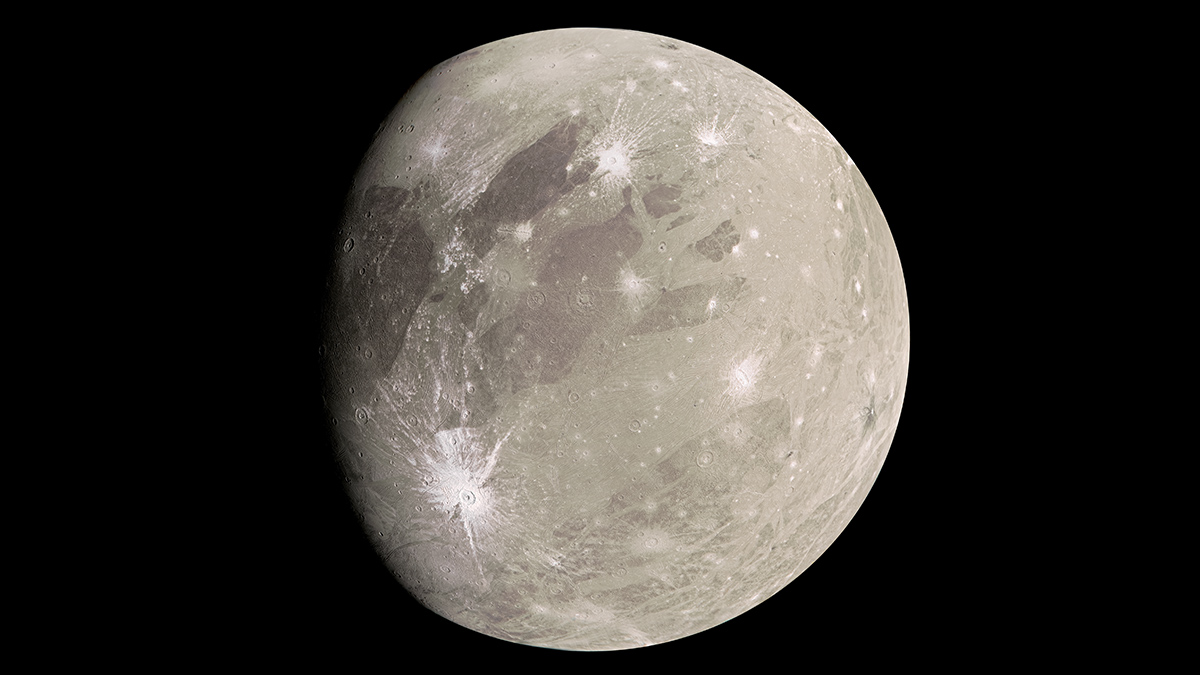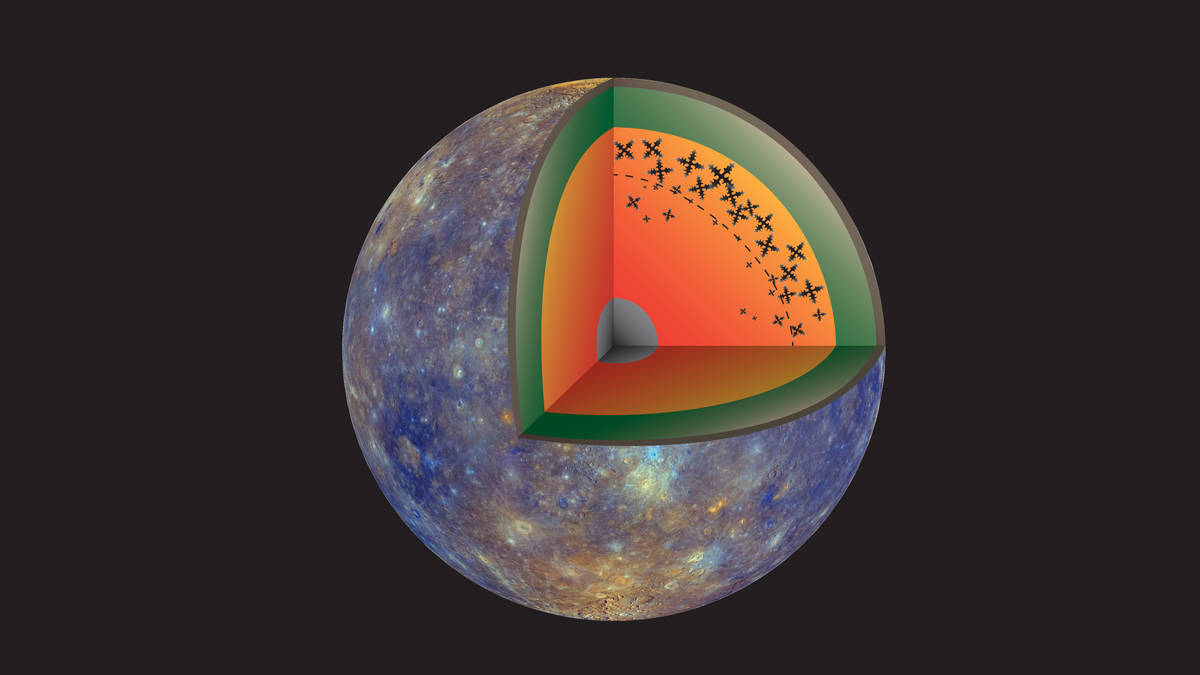Phases of ice that exist naturally only on frozen moons could be detected using infrared spectroscopy, according to new laboratory experiments.
Ganymede
Unveiling the Origins of Dome Craters on Ganymede and Callisto
Large craters with broad central domes are a unique crater morphology on Jupiter’s largest icy moons: Ganymede and Callisto. A new study examines how remnant impact heat may lead to their formation.
Iron Snow Ebb and Flow May Cause Magnetic Fields to Come and Go
Lab experiments find that iron crystals in planetary cores may form in bursts, causing periodic dynamos.
Radio on Jupiter, Brought to You by Ganymede
Another first from NASA’s Juno spacecraft: the detection of Jupiter radio emissions influenced by the moon Ganymede, over a range of about 250 kilometers in the polar region of Jupiter.
Juno Maps Water Ice Across Northern Ganymede
Infrared observations from instruments on the Juno spacecraft cover regions of Ganymede not visible to Earth-based telescopes.
Jupiter’s Galilean Moons May Have Formed Slowly
A new model is the first to simultaneously explain many of the moons’ characteristics, including their mass, orbits, and icy composition
How Jupiter’s Icy Moons Got Their Bands and Grooves
Europa’s churning ice crust could reveal signs of ocean life, new study suggests.







